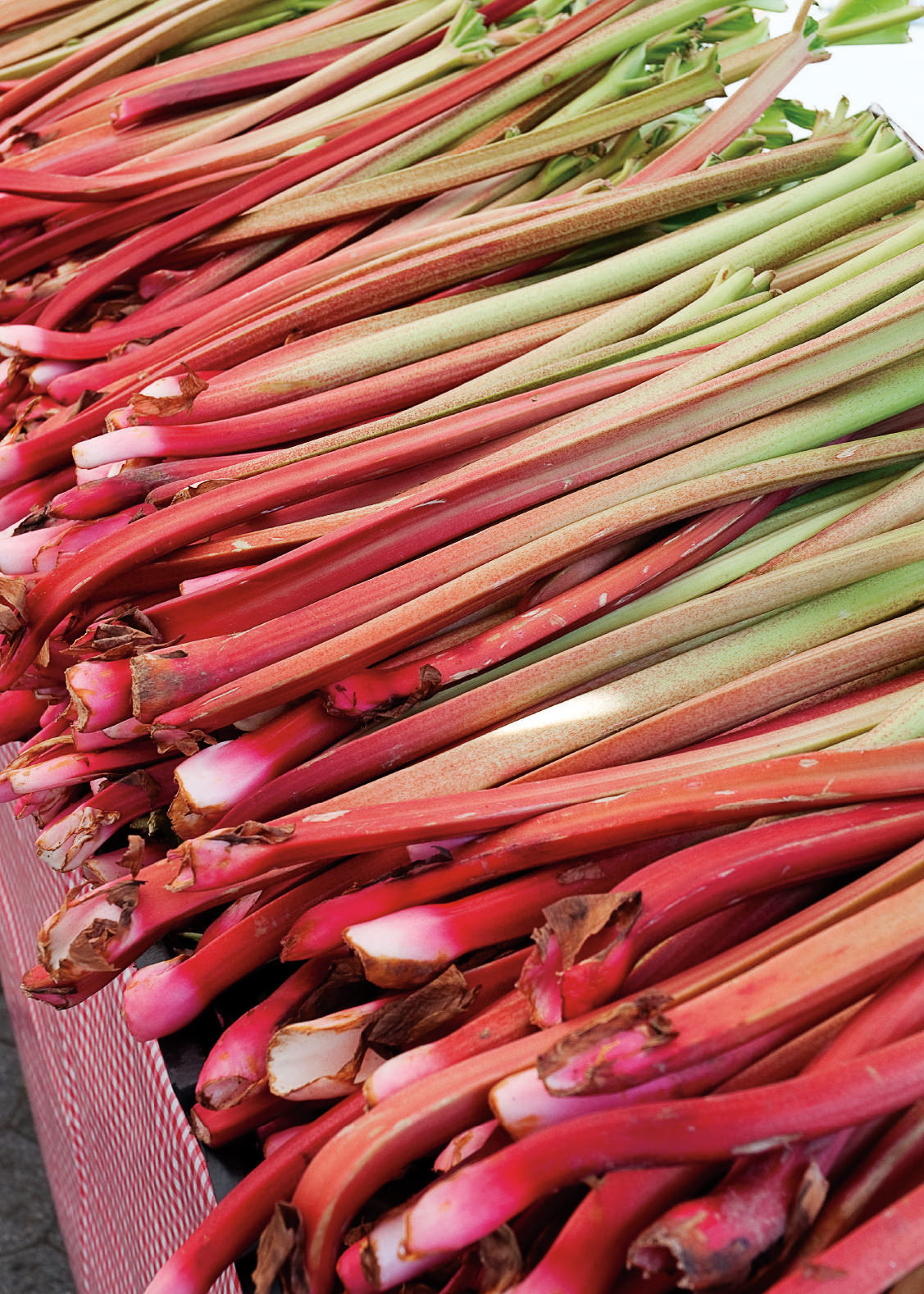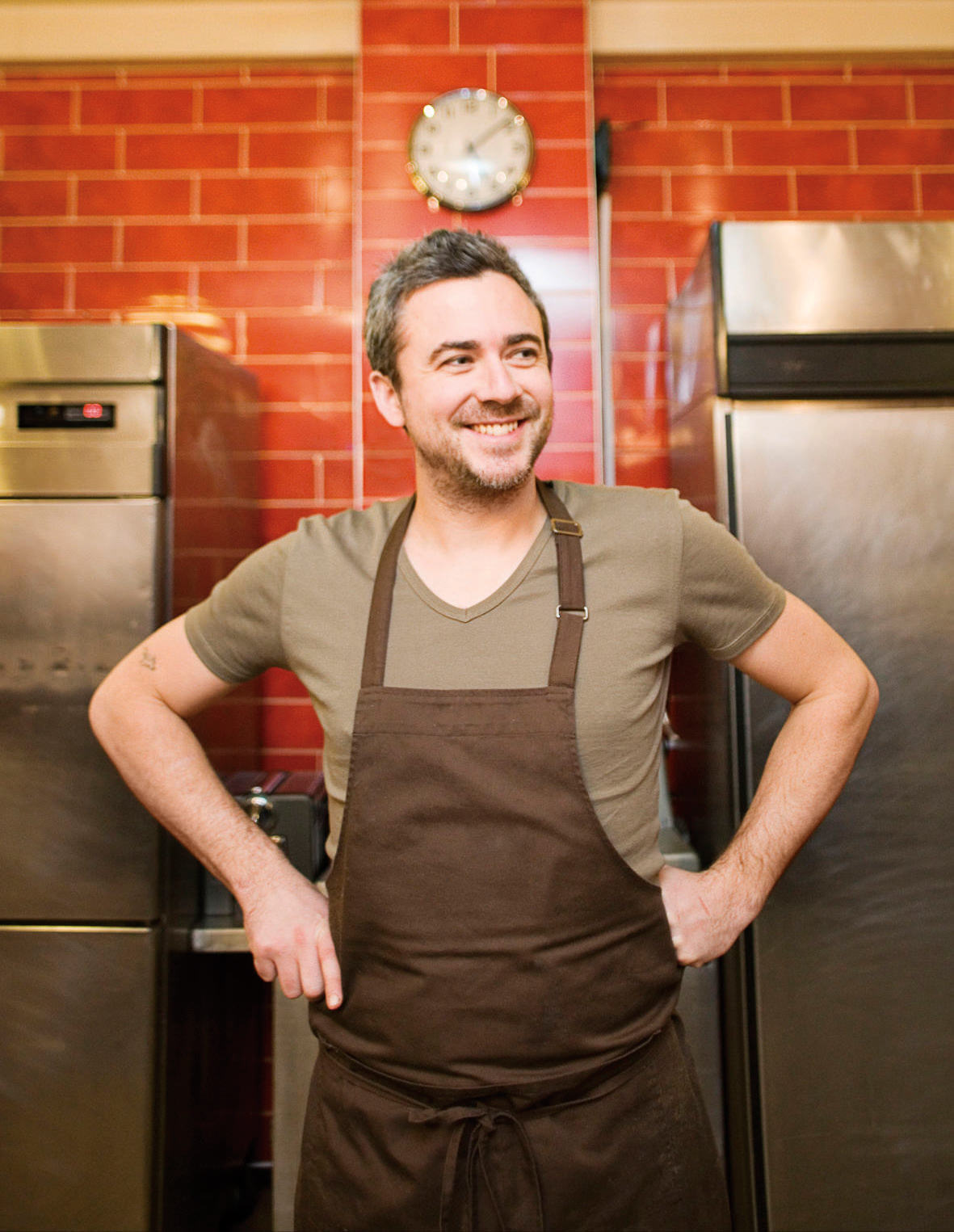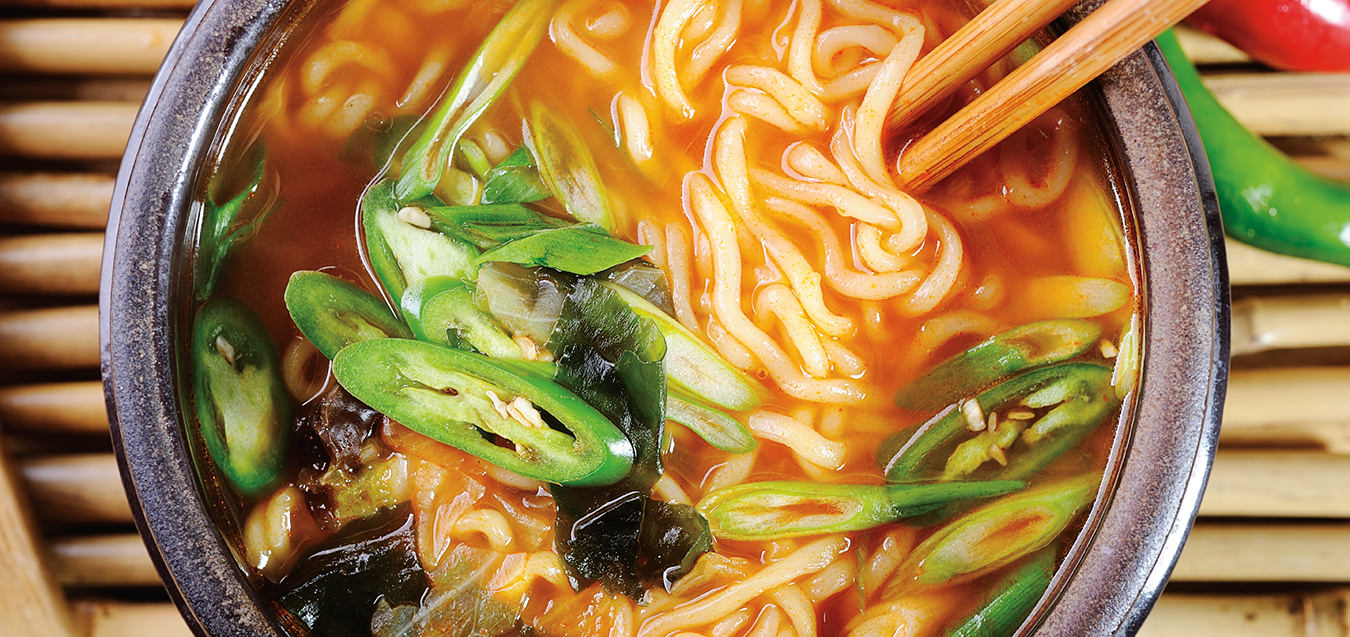-
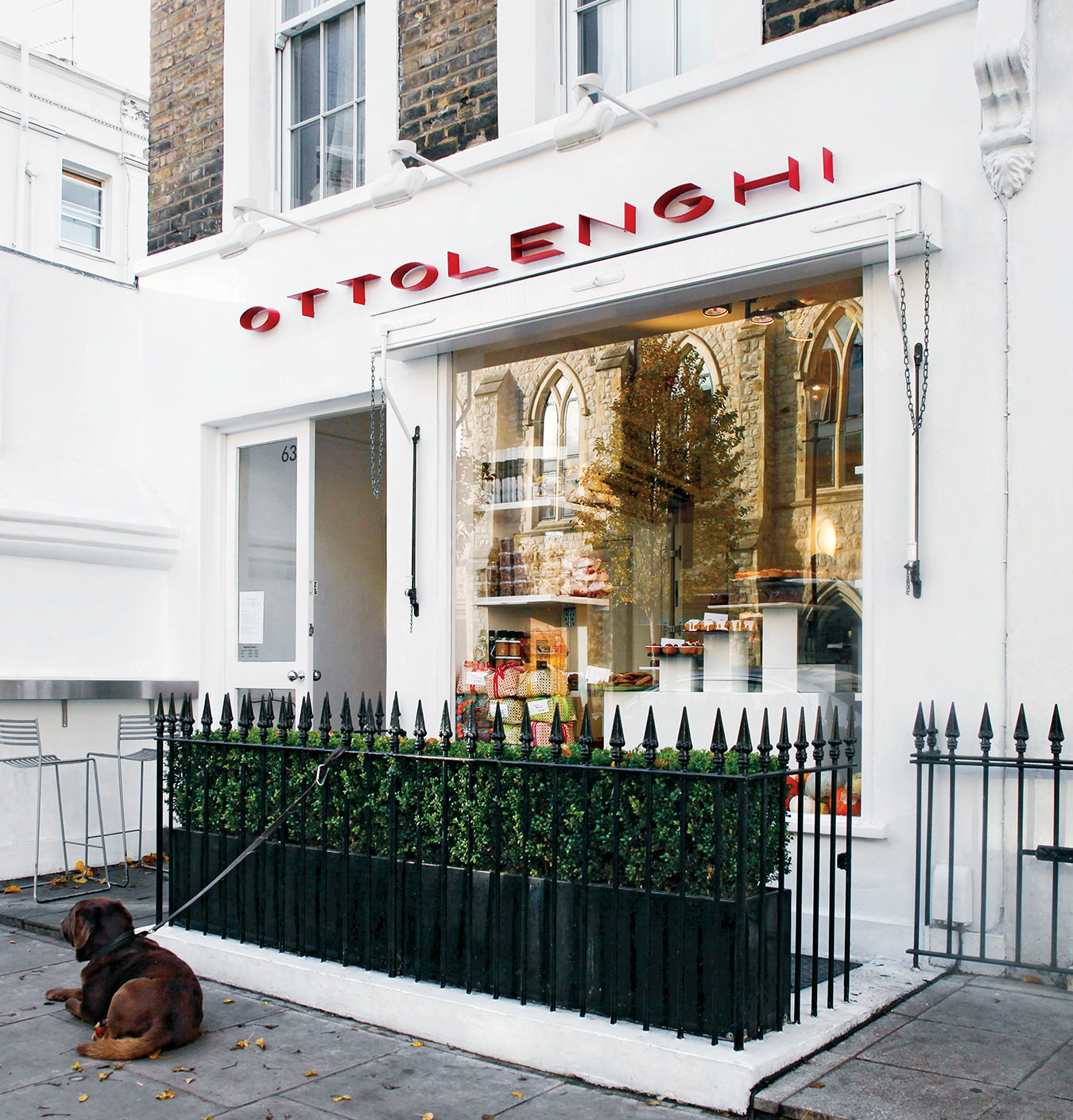
Yotam Ottolenghi’s first deli café, Ottolenghi, in Notting Hill, London.
-
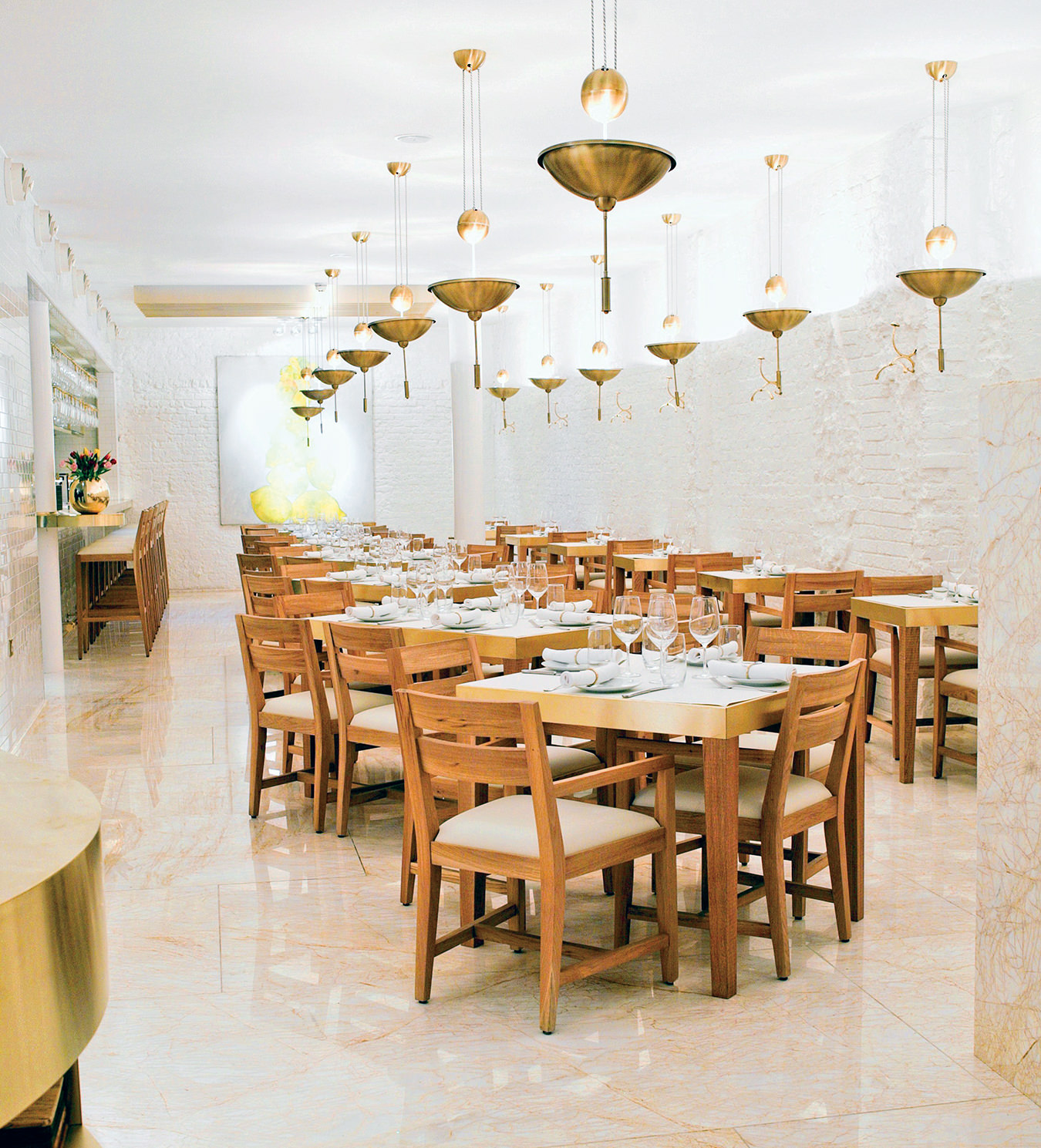
Nopi restaurant in Soho, London.
-
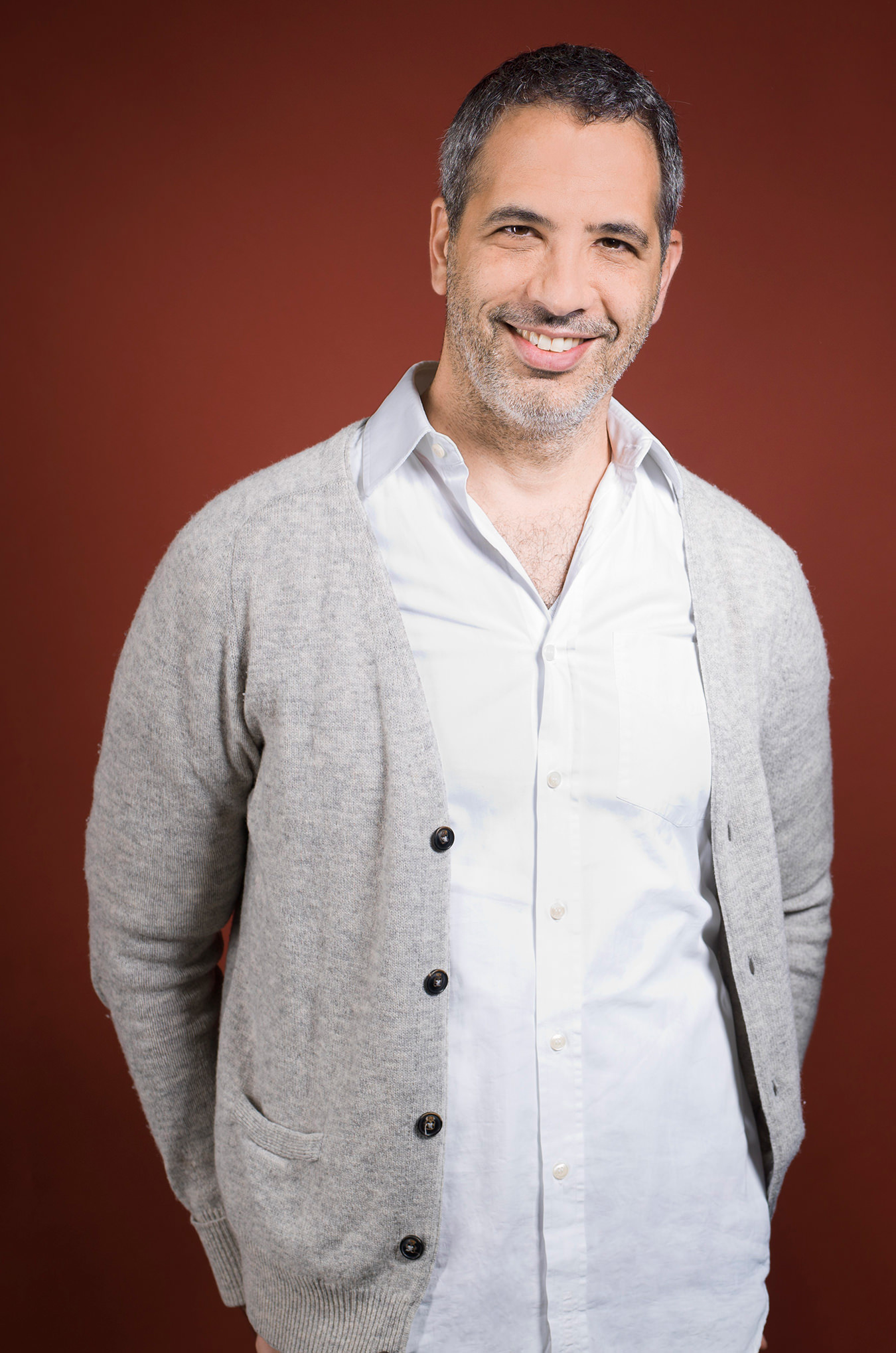
Yotam Ottolenghi.
-

Shakshuka eggs at Nopi restaurant in Soho, London.
-
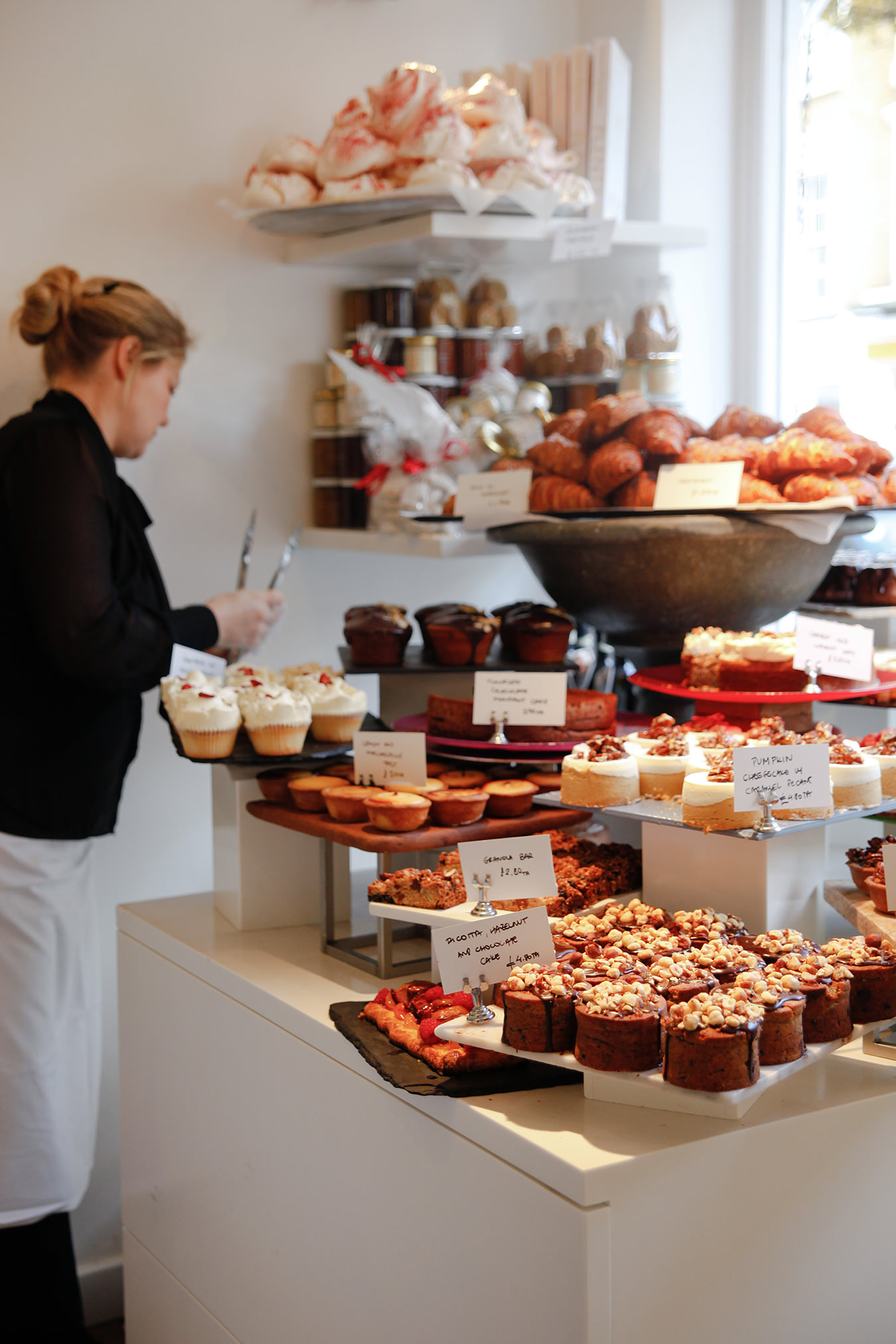
Cakes in Yotam Ottolenghi’s Notting Hill Deli.
-

Plenty More by Yotam Ottolenghi (U.S. edition).
-

Salads in Yotam Ottolenghi’s Islington Deli.
-
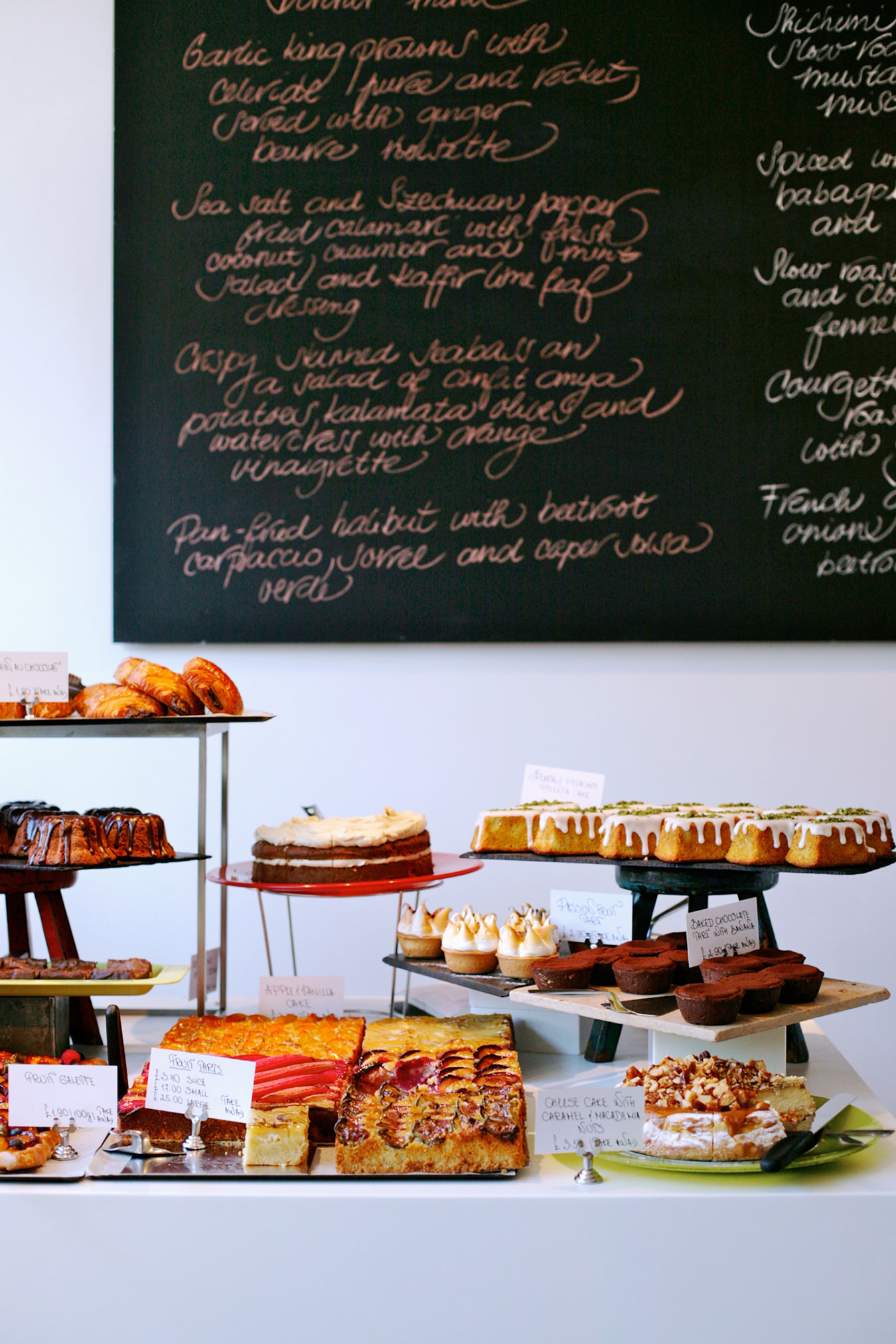
Cakes in Yotam Ottolenghi’s Islington Deli.
Yotam Ottolenghi
Kitchen of plenty.
Last winter and well into spring, my go-to recipe for feeding friends was Yotam Ottolenghi’s roasted chicken with clementines and arak. Ingredients were placed into a Ziploc, chilled overnight, and cooked in the oven for under an hour—add rice or couscous, and job done. There was contentment all around, especially for the cook as she glanced at the photo and thought “bird gilded, vegetables bronzed, jus glistening: Ottolenghi’s and mine, identical.”
You could say that Ottolenghi is the chef who has cranked up flavours to a ridiculous degree, and who has introduced thousands to the bold fare typical of the eastern Mediterranean, but all you really need to know is that his food is inventive, nurturing, and jammed with taste—not the only reasons why his books are bestsellers—and that he helms a growing restaurant empire in London.
It’s Monday at noon on a Soho side street. People are piling in to Nopi, his newest venture, all cream colours with touches of gold so the focus is on what’s on the plates and who’s eating them. Ottolenghi joins me at a corner table. Charcoal-haired and rangy, he has just come from proofing his latest cookbook, Plenty More. No crystal-ball gazing needed to forecast that this will probably up the Israeli-born chef and food writer’s cumulative sales over the one million mark. That’s a lot of well-fed people.
Born to Italian and German parents, Ottolenghi left his homeland in 1995 with an MA in comparative literature, and journalism experience. He went first to Holland and ended up in London two years later, where he switched tracks and trained at Le Cordon Bleu, gigged as a pastry chef, and then, the defining fork in the road, met Sami Tamimi—with the same birth year, from the same city, Jerusalem, but with a Palestinian background. Joining up with a couple of other business partners, they launched Ottolenghi in 2002; a fresh kind of deli café, it sold (and still sells) takeout food that raised the bar considerably via salads, pulses, grains, and desserts.
As the original deli bred two more, the Ottolenghi name began to spread beyond London, especially when, in 2006, his taste-driven approach prompted The Guardian to commission a column. The only proviso: no meat or fish. “I’m not a vegetarian at all,” he says. “But I come from a part of the world where the diet is much more balanced than here [in the U.K.]. It’s more reliant on vegetables and grains.” Still, he says, when he was asked to use only those: “I was very apprehensive about what it said about me as a chef.” (Ottolenghi continues to write the column, and the current proviso is anything goes.) What it said was that even the staunchest carnivore might be swayed by the likes of Swiss chard, chickpea, and tamarind stew, or quinoa salad with dried Iranian lime, and that far from being bit players, veggies could star. Even so, though his name rang increasingly louder bells with food-lovers, initial sales were slow for his first volume, the non-vegetarian Ottolenghi: The Cookbook (2008). They later rocketed, he says, by friends telling friends, who then told friends: he calls it “word to mouth.”
So many happy mouths. Ottolenghi’s “basic building blocks” include garlic, lemon, and olive oil, often in reckless quantities. He wields armloads, not sprigs, of herbs: a fava bean dish calls for more than three cups of cilantro. Cut with a sharp buttermilk and yogurt sauce, and prettied with pomegranate seeds, baked eggplant is unctuous in the extreme, but, seriously, 40 millilitres of olive oil per eggplant? Just trust him. Recipe testing is rigorous, he says, as he orders a shareable lunch for us. “A couple of times at least in the kitchen,” and then an objective tester to assess how easy or hard a dish is to make.
Mostly, it’s easy and, typical of big-hearted eastern Mediterranean tables, it’s equally easy on the cook. Dishes can usually be made in advance, serving temperatures are flexible, and there is recognition that friends come first, and if more show up than expected, no problem. Entertaining “should be about fun and nothing else,” says Ottolenghi. Recipes may appear complicated but looks are deceiving. The 17 spices and seasonings needed for slow-cooked lamb shawarma are added the day before.
Ottolenghi’s “basic building blocks” include garlic, lemon, and olive oil, often in reckless quantities. He wields armloads, not sprigs, of herbs.
Dishes invariably have a backstory. Ottolenghi starts off by saying, “Just boiling water, with the chicken bones supplying the flavour,” as we discuss his recipe for chicken with caramelized onion and cardamom rice. He then explains that meat and starch cooked together is typical of Jewish cooking from Georgia and southwest Asia, “the same as Palestinians do. It’s a dish that exemplifies this technique. You don’t have to make a stock, and it’s easy to clean up.” Also drawn from his background is “the whole principle of using mince [ground meat] to stuff vegetables and make meatballs.” (“A good meatball,” he has written, “tastes way better than even the best of steaks.”)
By now, lunchtime chat has ramped up customers’ conversation, so we move downstairs to a communal table near the open kitchen. Small plates arrive: heirloom carrots that are Titian orange, fragrant with coriander seeds and cilantro, and sauced with tahini and yogurt; three petite cauliflowers, their pale heads bronzed and served with a dipping sauce that bellows its garlic content from a metre away. Anchovies and olive oil are in there too. “Me and Sami like good, big flavours in an unapologetic way,” says Ottolenghi, somewhat unnecessarily.
His name may be the brand but he always credits the co-workers, friends, and aunts who inspire recipes. “Sami is a bit more shy. I’m an attention seeker,” he says of his Jerusalem, the cookbook, co-author. Nopi’s menu is a team endeavour with Tamimi and Nopi head chef Ramael Scully (Malaysian-born, Australian trained) and squad contributing. Never mind who originates a dish, it all seems to be refracted through the same audacious prism.
Where Plenty stressed individual, and families of, ingredients, Plenty More shines a light on method: the simmered, the roasted, the grilled, and the mashed. “When it comes to vegetarian cooking, people never talk about technique,” Ottolenghi says. “Restaurants never ask ‘How would you like your cauliflower done?’ ”—or think about rewriting classic cauliflower cheese as a savoury basil-inflected cauliflower cake.
Ottolenghi has been censured for using lesser-known ingredients such as za’atar, freekeh, and date syrup, but, he says, “I always offer alternatives.” (Pastis or ouzo can stand in for arak in my favourite chicken dish.) Besides, with ethnic groceries and the Internet: “The rare ingredients are not so rare anymore.” Different, from a U.K. perspective, is maple syrup, which he uses extensively, praising a depth of flavour that “isn’t as dominant as honey.”
Engaging, curious, keen, Ottolenghi is a TV natural. Many of his shows are on YouTube, and hundreds of his recipes are archived online. “I had the idea that the best food in the Mediterranean was in Turkey, and that was confirmed in Istanbul,” he says as we nibble on octopus, a Medici-worthy plate of ruby and rust, garnished with tiny crimson amaranth leaves that are added, he admits, for colour coordination, not flavour. Like all his food, the dish is visually striking due to its ingredients rather than culinary swashes. When he says, “The food we serve is the opposite of minimalist,” he means taste, not looks. Compare him to most chefs and it’s the difference between a well-mannered Norah Jones whispering “Don’t Know Why” and Ethel Merman belting out “Everything’s Coming Up Roses”.
Another dish arrives: twice-cooked baby chicken simmered in Asian stock breathing star anise and cinnamon, then fried, its crisp succulence enhanced by chili sauce, Australian lemon myrtle salt, and fresh lime. You eat it with your fingers. Ottolenghi is a big fan of using your hands, especially to mix salads. “Just lift the leaves,” he mimes. An online recipe features a reinvented tzatziki that is green from squeezed zucchini. Once you buy into his approach, you simply use your hands. We are now at dessert: a white chocolate parfait served with rhubarb braised in tamarind juice, a stunning contrast of sweet and sharp. Nothing unknown here, just new and effective alliances.
Ottolenghi says that he used to work all the time. Since he became a father two years ago, weekends are spent at home and once or twice weekly nights out are usually at his own restaurants. Holidays are with a group of friends on a quieter Greek island with no prizes for guessing who cooks.
He credits the zeitgeist for his success. Plenty, his first global hit, came out at “a time when people were keen on eating more vegetables, and looking to sex them up, especially in countries like the U.K., Holland, and Germany, where there’s a huge move to eating more responsibly. The timing was also right in exposing a new cuisine to the world,” says Ottolenghi. “Middle Eastern ingredients have never got their time in the sun. Tahini, sumac, za’atar, flower essences … I think [that people] were waiting for someone to smooth the way.”

